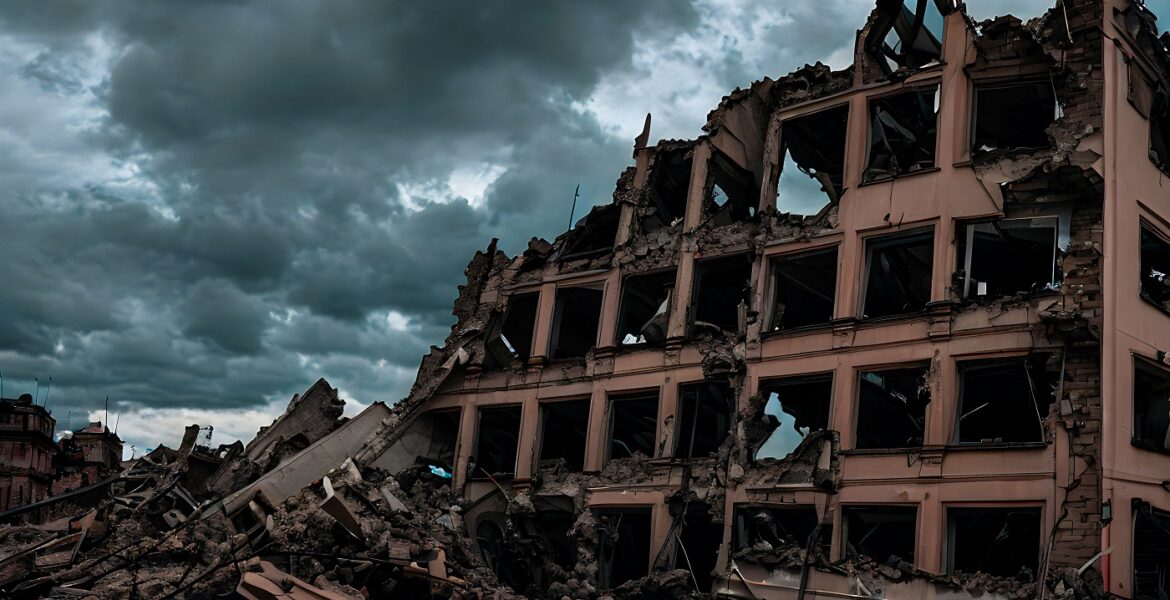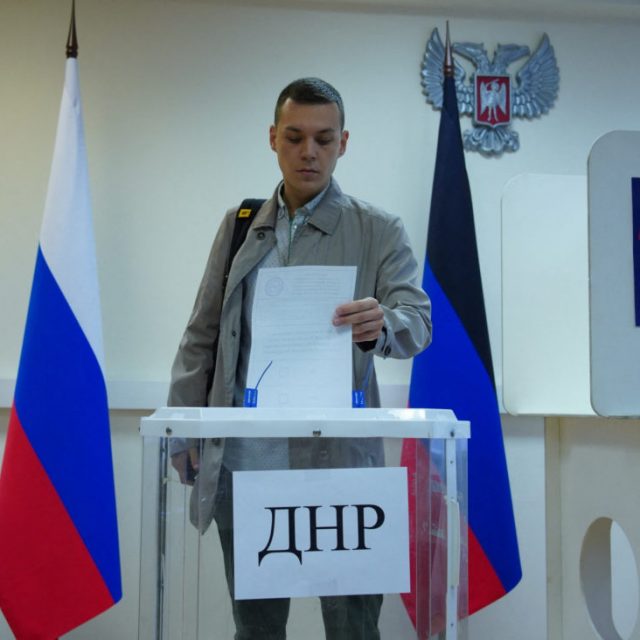Photo by Jade Koroliuk on Unsplash
Even if the average European, sipping morning coffee with a croissant, notices news reports about the destroyed high-rise buildings and burning schools in Kharkiv, it is unlikely to leave a significant impression, as it concerns an unknown city far away.
Kharkiv is the second-largest city in Ukraine, with a population of 1.5 million. An average European can easily imagine comparable cities like Munich (1.5 million), Marseille (1.6 million), or Barcelona (1.6 million). Thinking of children joyfully playing football on a school field in Marseille who are suddenly struck by a drone or ballistic missile would be deeply unsettling.
On March 27, Russian troops struck Kherson (279,000 residents) in broad daylight, attacking the railway station, the surrounding infrastructure, and the city centre. Two people waiting at a public transport stop were killed instantly, and others were hospitalised.
The day before, on March 26, Russian kamikaze drones attacked purely residential buildings in Kharkiv, where there have never been any military units or factories. As a result, fires raged throughout the night, several apartment buildings were damaged, and about twenty civilians were injured, including a 5 year old boy and a 14 year old girl.
On the same day, Dnipro, the fourth-largest city in Ukraine with nearly 1 million residents and a major scientific, research, and industrial hub known as Ukraine’s space capital, was attacked by drones and ballistic missiles. The attack destroyed several residential buildings, 60 private cars, and educational institutions, leaving three civilians seriously injured.
On March 24, in broad daylight, Russian forces launched a missile strike on the centre of Sumy (256,000 residents), resulting in 108 people being seriously injured, including 23 children. A vast number of civilian buildings, completely unrelated to combat activities, sustained significant damage. Three residential buildings were entirely destroyed, and over 3,000 windows were shattered by the blast wave.
Populated areas in frontline regions suffer not only from missiles and drones, which threaten the whole of Ukraine, but also from Grad rocket systems (GABs) and Russian long-range artillery. This includes regions such as Kharkiv, Sumy, Donetsk, Zaporizhzhia, and Kherson, where private homes, schools, kindergartens, businesses, and farms are destroyed daily.
At the same time, the war in Ukraine is happening not far from the EU but right along its eastern borders. For example, a flight from Kyiv to Paris takes only three hours, while a flight from London to Lisbon takes the average European five hours. The high-intensity combat that has been ongoing in Eastern Europe for three years significantly affects the situation across the entire European continent. While ordinary residents may not notice this fact, political leaders in most EU countries, the UK, Norway, Iceland, and Switzerland are eager for a swift end to the war.
Paradoxically, not all Western politicians, particularly in the U.S., fully understand that the war was started by Russia with its unprovoked all out invasion of Ukraine. It is precisely the Russian Federation that can end the war.
However, as the last few weeks have shown, Moscow is not interested in ending the war. Russian delegations only participate formally in talks brokered by the U.S. and Saudi Arabia, demonstrating an unyielding position and presenting Kyiv with deliberately unrealistic demands that, in effect, signify complete capitulation. While an agreement has been reached to ban strikes on energy and civilian infrastructure, Russian forces continue to carry out constant air attacks on Ukraine, particularly targeting critical infrastructure in major cities and harming the civilian population.
On March 23, all Ukrainians were shocked by the news that a 5-year-old girl and her father were killed (while her mother was hospitalised in serious condition) in a drone attack on Kyiv. They were internally displaced persons from the frontline areas of the Zaporizhzhia region. In another incident, an elderly woman was burned alive in a fire caused by a drone strike armed with a thermobaric warhead. On March 25, a 3-year-old child and her 36-year-old mother were killed in a bomb attack on the village of Kurytivka in the Donetsk region.
Ukrainians have been reading a stream of such tragic news daily for the past three years. It would be absurd to think that, under these conditions, the citizens of Ukraine do not want an immediate end to the war. They seek not a temporary ceasefire but a lasting peace based on justice, international law, and respect for the inviolability of borders and the territorial integrity of states.
In the meanwhile, Russia’s leadership relies not so much on the victory of its troops on the battlefield but through terrorist pressure across the entire country of Ukraine through continuous air attacks. These attacks ruthlessly destroy critical infrastructure and lead to significant civilian casualties. The Kremlin hopes that the Ukrainian people will either flee to Europe or face political turmoil, demanding that Kyiv immediately cease its resistance and agree to a peace agreement on Russia’s terms. In other words, Ukraine’s capitulation to Russia.
The Kremlin’s leaders believe that by continuing to kill innocent Ukrainians, including children, they will break the spirit of resistance and the willpower of the Ukrainian people, regardless of their ethnic origin or language. Currently, Putin’s goal is not to quickly capture Kharkiv, Sumy, Dnipro, and other major Ukrainian cities—he hopes to do that later—but to force Ukrainians into “peace” as defined by Moscow, rather than by Kyiv and its Western allies.
By “peace,” the Kremlin means the resignation of President Zelensky and the installation of a government in Kyiv that would agree to the annexation of Crimea, Sevastopol, the Donetsk, Luhansk, Zaporizhzhia, and Kherson regions—already included in the Russian Federation’s Constitution. This would ultimately result in a puppet and diminished Ukraine entering the Union State of Russia and Belarus, as well as the Eurasian Economic Union.
Therefore, Putin has ordered not only to fight the enemy’s army but also to commit genocide against the Ukrainian nation through all available means. As the Kremlin sees it, the more Ukrainian citizens become refugees in EU countries, the better it will be for future occupying authorities. Other Ukrainians would pressurise Kyiv to capitulate. While the West seeks a peace agreement between Moscow and Kyiv, Russia prefers to continue committing war crimes.




